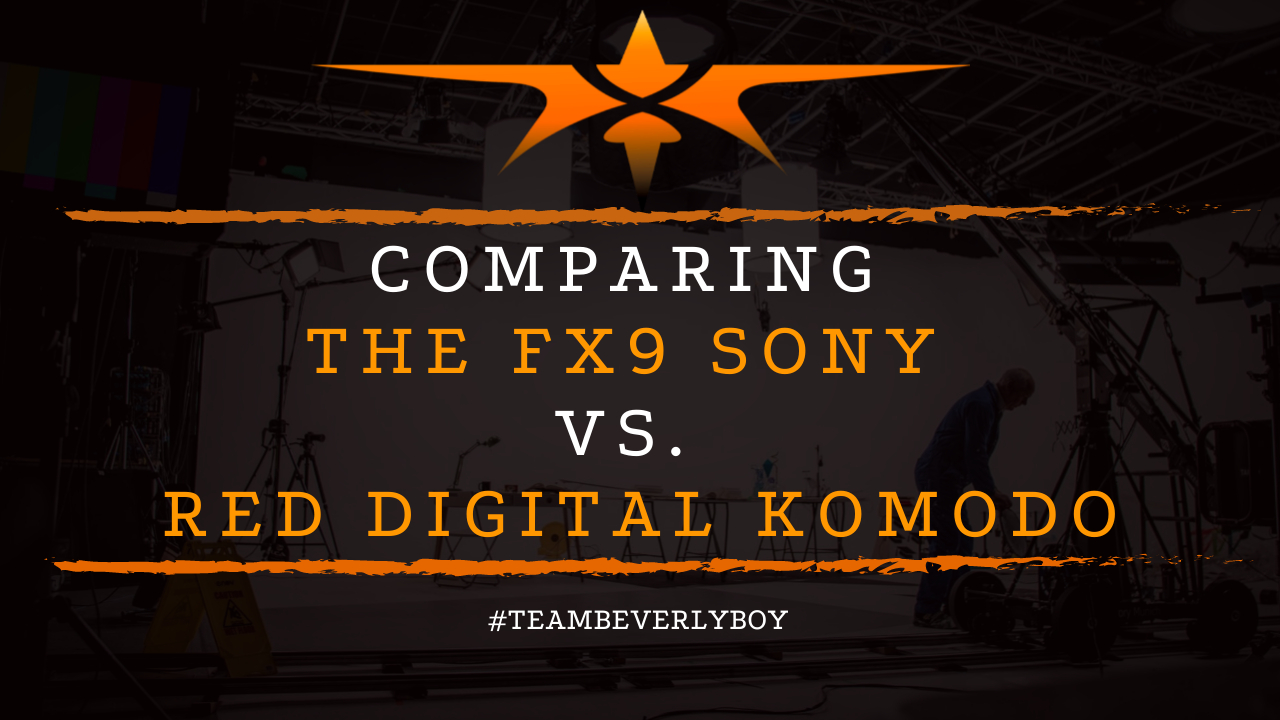
Comparing the FX9 Sony vs. Red Digital KOMODO
Launched rather close to one another, the Sony FX9 and Red Digital KOMODO will both pack a powerful punch when it comes to professional filmmaking, but just how good is the FX9 Sony vs. Red Digital KOMODO? We’re comparing unique features, specifications, and the cinematic capabilities of the Sony FX9 vs. Red KOMODO to see how these ultra-powerful, professional quality cinema cameras stack up.

They’re both relatively small and lightweight, handhelds with professional level functionality, but how do the two fare in terms of price and against individual use tests?
The Beverly Boy Team set out to find out.
Price
At approximately half the price of the FX9, the Red KOMODO packs a powerful cinematic punch for a 6K digital camera.
Current pricing sits somewhere around $6K for the Red Digital KOMODO whereas the Sony FX9 is priced at about $11K.
Both are for a body only setup and have additional costs involved in the purchase of accessories such as lenses, extensions, monitors, and other items.
Sensor Specifications
In comparing the FX9 Sony vs. Red Digital KOMODO, both cameras provide 6K technology with the Sony featuring an actual 20.5 megapixel sensor resolution for a total 19 effective megapixels.
Whereas the Red Digital KOMODO features 19.9 effective megapixels. Sony FX9 features 35.7 x 18.8 full-frame CMOS while the KOMODO provides 27.03 x 14.26 Super35 CMOS comparative to Sony’s FS7 from prior years.
You’re going to miss out on the built-in ND filter with the KOMODO, but Sony FX9 provides 4 to 128 stop electronic ND filter for absolute control and maximum flexibility.
All while delivering nearly unlimited aperture combinations.
Quality
Under testing, the FX9 and the Red KOMODO are days apart in terms of quality. Sony really has taken you to the next level with the FX9.
Under exposure at ‘base’ ISO holds up great to about 4 stops before things begin to shift for both cameras with anything over 5 stops rendered unusable.
In underexposed and overexposed situations the FX9 holds steady until 4 stops whereas the Red loses accuracy in unexposed settings.
But maintains color quite consistently in over exposure up to 4 stops but not beyond.
Lighting
The FX9 also holds up well in low light settings. In fact, there’s almost no comparison between FX9 Sony vs. Red KOMODO here!
As the FX9 just appears to hold up so much more than the KOMODO which really is limited to ISO 1600 at best.
Sony certainly takes the lead here with quality ISO 25600 and incredible noise reduction in post.
Additional Features
Our final comparisons between FX9 Sony vs. Red Digital KOMODO focus on camera features provided by the two.
The KOMODO features Phase-Detect Autofocus (PDAF) when a compatible lens is in use making it particularly valuable to documentary filmmakers.
As well as those filming small to medium sized corporate videos. However it’s probably not going to compare to the Fast Hybrid AF autofocus system!
Which includes 561 points of facial detection and advanced image stabilization in the Sony PXW-FX9.
The Difference
All in all, while the Red Digital KOMODO may be a moderately-priced professional camera that is somewhat comparable to cameras that are significantly higher priced within a similar lineup?
Filmmakers that have the funds are almost certain to have better outcomes with the Sony FX9 power horse.
Featuring maximum capability in low-light situations, ultra-rapid autofocus and facial detection technology, and a full lineup of advanced specifications.
Which are comparable to a camera that would cost double or triple what the FX9 costs, you can’t go wrong with Sony’s technology.
Team Beverly Boy’s Verdict
Still not sure if you should get the FX9 Sony vs. Red Digital KOMODO? At Team Beverly Boy, we choose the FX9 all day long!


